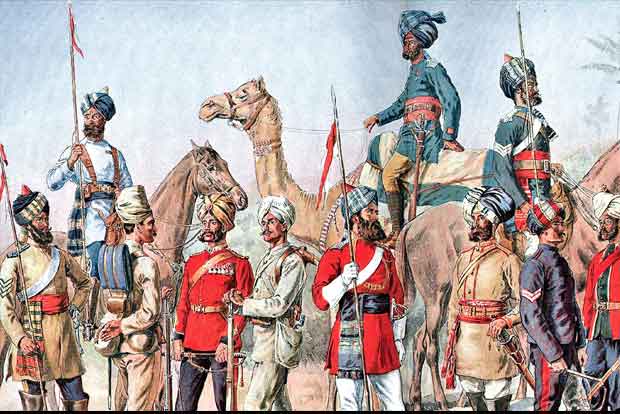Begin typing your search...
Military historian to highlight raising of Madras Regiment
In 1758, the first regiment of the Indian Army was raised at Fort St George, even as it was under siege by French soldiers. This memorable event laid the foundation for India’s Army. In a talk titled ‘Madras Soldier’, Captain D P Ramachandran, military historian, will trace the genesis of the Madras Regiment and the major battles which they fought in, from 1741 to 2017.

Chennai
The retired cavalryman will be narrating battles, where the Madras Regiment played a vital role. “I go back to the Battle of Colachel in 1741, when the Dutch army was defeated by the forces of Marthanda Varma, the King of Travancore and his army, putting an end to Dutch imperial dreams in India. This army survived the colonial period and later, merged with the Madras Regiment and became the ninth battalion, which is the oldest surviving military unit,” said the historian.
Captain Ramachandran added that while sepoys were recruited, they weren’t tested until the Battle of Adyar in 1746. “That was the litmus test, which proved successful, as a 1,000-strong force routed through the 10,000-strong force of the Nawab, in the war between the French and English. Following this, there was the Siege of Arcot, wherein Robert Clive held out against a 15000-strong Mughal Army with barely 300 men, most of them sepoys. It was one of the greatest ‘last stand’ situations in history. However, it was in 1758 that the first regiment of the Indian army, the Madras Regiment was raised in Fort St George, even as the French laid siege outside, in their final push to seize Madras,” said the military historian, who will be speaking at Shakunthala Art Gallery, CP Art Centre, on Tuesday (today) at 2.30 pm. Videos on Battle of Assaye and on the Madras Sappers and Miners would also be screened.
The greatest battle, he pointed out, was the Battle of Assaye, which broke the Maratha confederacy, paving way for the British to consolidate their presence in northern India. While the British did have regiments in Calcutta, the north Indian soldiers refused to cross the sea, fearing they would lose their caste. “The Madras Regiment participated in all three Burma Wars, as well as the Opium War in China. However, there was a long gap after that, when the Madras army was downsized and people lost interest in the military.
However, it perked up during World Wars I and II,” he added. The talk will also dwell on recent achievements, concluding with the incredible story of Lance Naik Hanumanthappa Koppad, a solider with the Madras Regiment, who, after surviving six days after an avalanche, buried 10 soldiers. “Though he died in the hospital, imagine the kind of grit required to survive under such harsh conditions. That’s the Indian army for you,” he concluded.
Visit news.dtnext.in to explore our interactive epaper!
Download the DT Next app for more exciting features!
Click here for iOS
Click here for Android
Next Story



